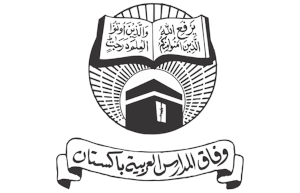Our Junior School has Boys from Grade 2-6 and Girls from Grade 2-8 {We will be adding a new Grade for boys every year till O-Levels, inShaAllah. Our school will grow with the Grade 6 for boys}. Boys and girls are separated into different sections in Grade 3.
How is our Junior School Different:
Our Junior School is special because:
- a firm ‘base‘ is established in academics (the average work experience of our Junior School faculty is one of the highest in Pakistan)
- students have an opportunity to do Hifz (see the Hifz section), and tajweed is compulsory for the rest.
- we have extra classes in Aqaaid, Fiqh, Akhlaqiaat, Hadith, and Islamic History
- we are the first in Pakistan to offer Arabic as an O-Level subject on a regular basis. Our students, Alhamdolilah, not only ace Arabic in O-Level exams, majority of them are also able to freely converse with native Arabs, in Arabic, by the time they graduate from Scholastic.
- we have promoted ‘flipped learning’ model, AND our classrooms are a ‘mix’ of face-to-face and on-line learning (‘blended learning’).
What do we mean by “Flipped Learning”?
Flipping the classroom is introducing students to course concepts at home so that class time can be utilized for active learning. By giving students access to course content at home, valuable class time can be spent applying concepts, asking questions, collaborating, discussing, participating in other active learning activities and inculcating in them the Islamic perspective and values.
In our classrooms, it’s best for students to spend the majority of class time “actually doing something—so students spend more time posing questions and discovering the answers for themselves.”

Benefits of flipped learning:
- Students have access to their classroom 24/7.
- They can track their progress as they go through the course of the year.
- The world is digital and we need to prepare our students for this. There is a difference between digital learning (looking for information and reading for information) and digital entertainment.
- In the long term, it shows the students the reasons to take responsibility of their learning.



